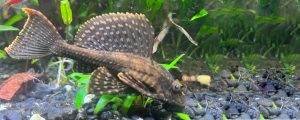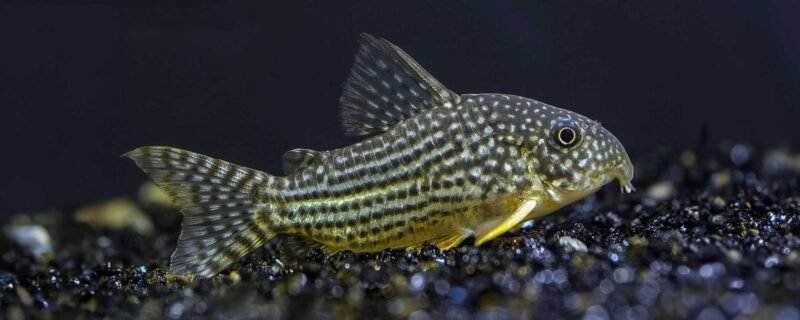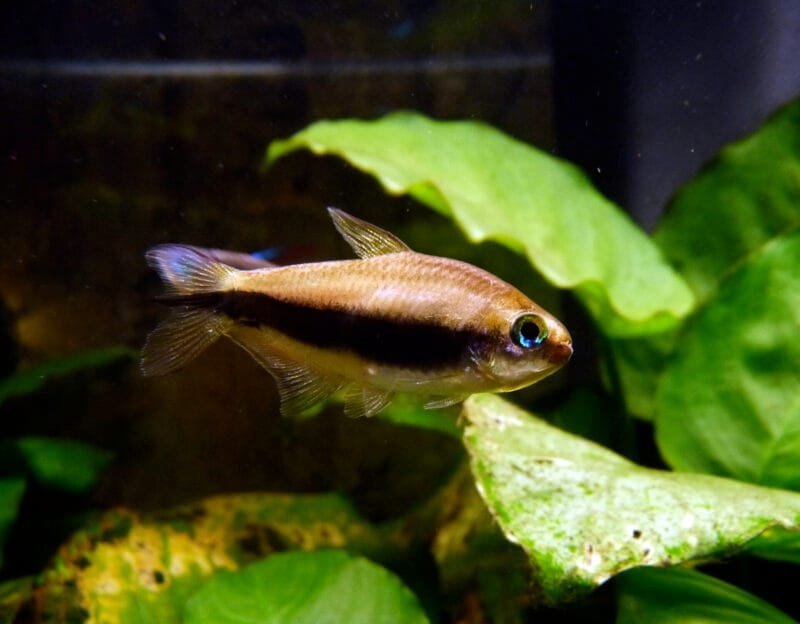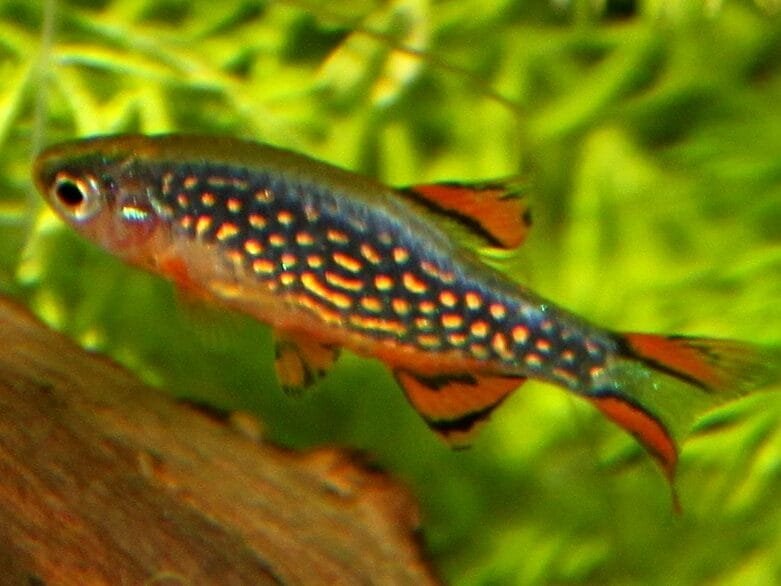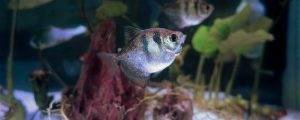The Elegant Corydoras (Corydoras elegans), commonly known as the Elegant Cory Catfish, is a small, peaceful freshwater fish beloved by aquarists for its refined appearance and engaging behavior. Native to South America, particularly the upper Amazon River basin, this species is one of the more beautifully patterned members of the Corydoras genus. Its name “elegans” is fitting—it boasts graceful movements, intricate markings, and a charming, social demeanor that makes it a standout in community aquariums.
Native Habitat
Corydoras elegans originates from Colombia, Brazil, and Peru, where it inhabits slow-moving tributaries, flooded forests, and marginal zones of the Amazon River. These waters are typically soft, slightly acidic, and rich in leaf litter. The fish thrive among submerged roots and decaying vegetation, where they sift through fine sand in search of small invertebrates. In aquariums, replicating this natural environment with soft substrate, shaded areas, and gentle water flow helps them feel secure and display their best behaviors.
Size and Lifespan
The Elegant Corydoras is a small species, usually growing to about 2.5 to 3 inches (6–7.5 cm) in length. Males tend to be slightly smaller and slimmer, while females are broader, especially when carrying eggs. With proper care, clean water, and a well-balanced diet, Corydoras elegans can live for up to 5 years, sometimes even longer in optimal conditions.
Diet and Feeding
In the wild, Corydoras elegans are omnivorous bottom-feeders, consuming insect larvae, small crustaceans, worms, and organic debris. In captivity, they thrive on a varied diet that includes:
-
High-quality sinking pellets or wafers designed for bottom-dwellers
-
Frozen or live foods such as bloodworms, daphnia, and brine shrimp
-
Blanched vegetables like zucchini or cucumber (occasionally)
Feed them small portions twice daily, ensuring food reaches the bottom, as they rarely compete with midwater feeders. Avoid overfeeding, which can lead to poor water quality and stress.
Sexing and Dimorphism
Sexing Corydoras elegans is fairly straightforward for experienced aquarists:
-
Females are larger and rounder-bodied, especially when viewed from above.
-
Males are smaller, slimmer, and have slightly more pointed dorsal fins.
During breeding season, females often become noticeably plumper as they develop eggs, while males will actively follow them around the tank.
Breeding
Breeding Corydoras elegans can be a rewarding experience. These fish exhibit classic Corydoras “T-position” spawning behavior, where the male fertilizes eggs held by the female before she deposits them on a clean surface.
Conditions for Successful Breeding:
-
Tank Setup: A separate breeding tank with fine sand or smooth substrate.
-
Temperature: 75–79°F (24–26°C).
-
Water Parameters: Slightly acidic to neutral (pH 6.0–7.0), soft water.
-
Triggering Spawning: Simulate rainy season by performing small, cooler water changes.
-
Egg Care: Remove adults after spawning; they do not guard their eggs.
-
Hatching: Eggs hatch in 3–5 days, and fry can be fed infusoria, followed by baby brine shrimp as they grow.
Water Conditions
To replicate their native Amazonian habitat, maintain the following water parameters:
| Parameter | Ideal Range |
|---|---|
| Temperature | 72–79°F (22–26°C) |
| pH | 6.0–7.5 |
| Hardness | 2–15 dGH |
| Ammonia/Nitrite | 0 ppm |
| Tank Size | Minimum 20 gallons for a small group |
They thrive in well-oxygenated water with gentle filtration and a soft sandy substrate, allowing them to dig safely without injuring their delicate barbels.
Ease of Care
The Elegant Corydoras is considered easy to moderate in care level. They are hardy and adaptable once established but require clean, stable water. Weekly water changes of 25–30% are ideal. Avoid sharp substrates and aggressive tank mates, as both can stress or harm these gentle fish. A peaceful, planted tank is best for them.
Tankmates and Community Compatibility
Corydoras elegans is an excellent choice for community aquariums, as it is non-aggressive and social. They should always be kept in groups of at least five to six individuals, as they display schooling behaviors and comfort in numbers.
Compatible Tankmates:
-
Small tetras (e.g., neon, cardinal, or ember tetras)
-
Livebearers (guppies, mollies, platies)
-
Shrimp and snails (in calm setups)
Avoid larger or aggressive species like cichlids or barbs that may nip at their fins or outcompete them for food.
Species Variations
Within the Corydoras elegans group, there are subtle pattern and color differences based on locality. Some display more prominent lateral stripes, while others have spotted or reticulated patterns. These variations add unique visual interest but share the same care requirements.
Albino Variant
An albino form of the Elegant Corydoras occasionally appears in the aquarium trade, though it is less common than the albino version of the Bronze Corydoras (Corydoras aeneus). The albino C. elegans exhibits a creamy white or pale pink body with red eyes. While visually striking, its care requirements are identical to the standard form. They may be slightly more sensitive to bright light, so ensure shaded areas are available in the tank.
Behavior and Social Traits
Corydoras elegans are lively bottom dwellers that spend most of their time exploring the substrate in small groups. Unlike some Corydoras species, they are more mid-bottom swimmers and occasionally dart upward for gulps of air, a normal behavior due to their intestinal breathing adaptation. Their playful, cooperative nature makes them fascinating to observe.
Relatives and Taxonomy
Corydoras elegans belongs to the Callichthyidae family, which includes hundreds of armored catfish species. Close relatives include Corydoras napoensis and Corydoras nanus. The genus Corydoras is known for its bony plates (“scutes”) that act as armor, a unique trait among small freshwater fish. These species share similar care, diet, and social habits, making them popular choices for community setups.
Conclusion
The Elegant Corydoras (Corydoras elegans) truly lives up to its name—graceful, social, and a joy to watch. Ideal for both novice and experienced aquarists, it adds both beauty and personality to any freshwater community tank. With clean water, good companions, and a naturalistic environment, these charming catfish will reward you with years of peaceful, active companionship.
FAQs about Corydoras elegans
1. How many Corydoras elegans should be kept together?
They are social fish and should be kept in groups of at least five to six to feel secure and display natural behaviors.
2. Can Elegant Corydoras live with shrimp?
Yes, they can live peacefully with shrimp and snails, as they are not predatory and will not harm tankmates.
3. What substrate is best for Corydoras elegans?
Use soft sand or smooth gravel, as rough substrates can damage their sensitive barbels and cause infections.

